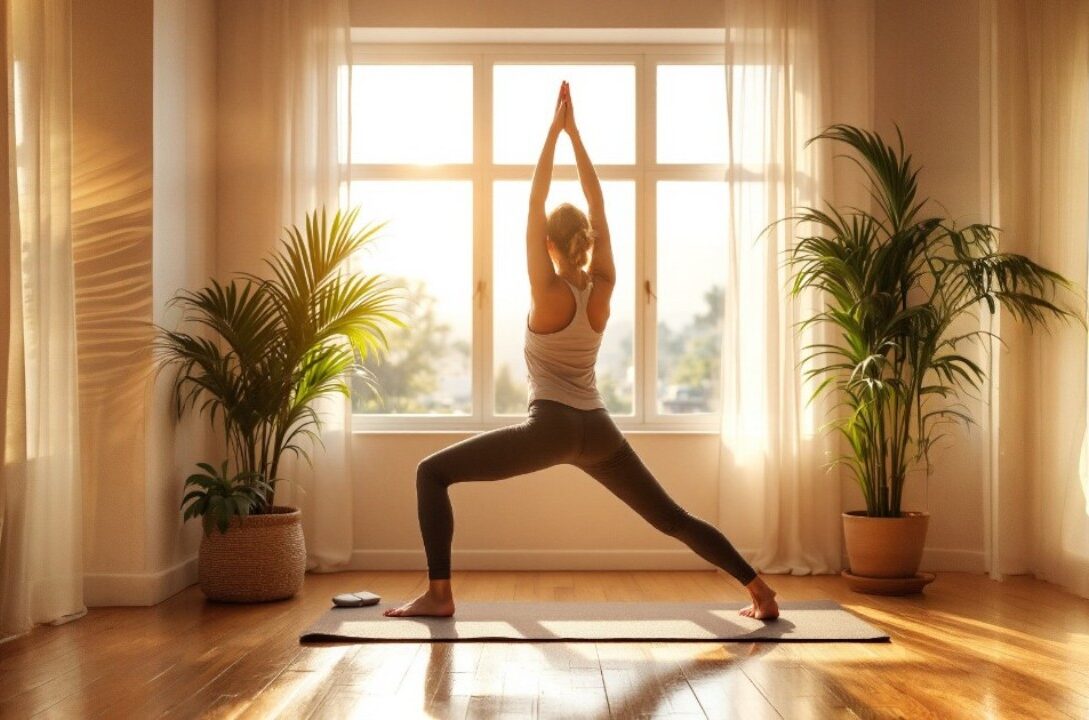We all know that regular exercise is vital for our physical and mental well-being. However, finding the time to squeeze in a workout can be challenging, especially in our busy lives. What if we told you that you could reap the benefits of exercise without sacrificing precious morning time? In this article, we’ll explore five quick and effective exercises you can do before breakfast to jumpstart your metabolism, boost your energy levels, and enhance your overall health.
Why Exercise Before Breakfast is Beneficial: Fueling Your Body for Success
Exercising on an empty stomach, or in a fasted state, has been shown to offer several unique benefits. When we exercise before breakfast, our bodies are more likely to tap into stored fat for energy, which can aid in weight management. Furthermore, pre-breakfast exercise can improve insulin sensitivity, regulate blood sugar levels, and boost metabolism. It’s a fantastic way to set a positive tone for the day and energize both our bodies and minds.
The Science Behind Fasted Exercise: Burning Fat and Boosting Metabolism
The science behind fasted exercise lies in how our bodies utilize energy. When we haven’t eaten for several hours, our glycogen stores (stored carbohydrates) are depleted. As a result, our bodies turn to fat as a primary fuel source during exercise. This can lead to increased fat burning compared to exercising after eating. Additionally, fasted exercise can stimulate the production of growth hormone, which plays a role in muscle growth and repair.
5 Quick and Effective Pre-Breakfast Exercises: A Morning Routine for Success
Now, let’s dive into five quick and effective exercises you can incorporate into your pre-breakfast routine. These exercises require minimal equipment and can be done in the comfort of your own home.
1. Jumping Jacks: Warming Up Your Body and Boosting Circulation
Jumping jacks are a classic warm-up exercise that gets your heart pumping and improves circulation. Start with your feet together and arms at your sides. Jump up, spreading your legs and raising your arms overhead. Then, jump again, returning to the starting position. Aim for 10-15 repetitions, gradually increasing the number as you get fitter.
Modifications for Jumping Jacks: Catering to Different Fitness Levels
If you’re new to exercise or have joint issues, you can modify jumping jacks by stepping out to the sides instead of jumping. This reduces the impact on your joints while still providing a cardiovascular workout.
2. High Knees: Engaging Your Core and Strengthening Your Legs
High knees are a great exercise for engaging your core and strengthening your leg muscles. Stand with your feet hip-width apart. Bring your right knee up towards your chest, then alternate with your left knee. Continue this movement, pumping your arms as if you’re running. Aim for 20-30 repetitions per leg.
Variations of High Knees: Adding Intensity to Your Workout
For a more challenging variation, you can try bringing your knees up higher towards your chest or increasing the speed of your movements.
3. Squats: Strengthening Your Lower Body and Core
Squats are a compound exercise that works multiple muscle groups in your lower body, including your quads, glutes, and hamstrings. Stand with your feet shoulder-width apart. Lower your hips as if you’re sitting back into a chair, keeping your back straight and your chest up. Go as low as you comfortably can, then push back up to the starting position. Aim for 10-12 repetitions.
Proper Squat Form: Ensuring Safety and Effectiveness
Maintaining proper squat form is crucial to avoid injuries and maximize the benefits of the exercise. Keep your back straight, your core engaged, and your knees in line with your toes.
4. Push-ups: Building Upper Body Strength and Endurance
Push-ups are a fantastic exercise for building upper body strength and endurance. Start in a plank position with your hands shoulder-width apart and your body in a straight line from head to heels. Lower your1 chest towards the floor by bending your elbows, then push back up to the starting position. Aim for as many repetitions as you can with good form.
Modifications for Push-ups: Making them Accessible for Everyone
If full push-ups are too challenging, you can modify them by doing them on your knees. This reduces the amount of weight you need to lift, making the exercise more accessible.
5. Plank: Strengthening Your Core and Improving Stability
The plank is an excellent exercise for strengthening your core and improving stability. Start in a plank position with your forearms on the ground and your body in a straight line from head to heels. Hold this position for as long as you can, aiming to increase the duration over time.
Variations of Plank: Adding Challenge to Your Core Workout
For a more challenging plank variation, you can try lifting one leg or arm off the ground while maintaining your balance.
Creating a Pre-Breakfast Exercise Routine: Putting it All Together
Now that you know five effective pre-breakfast exercises, you can create a routine that works for you. Start with a warm-up, such as jumping jacks, followed by the other exercises. You can do each exercise for a set number of repetitions or for a certain amount of time. As you get fitter, you can gradually increase the intensity and duration of your workouts.
Sample Pre-Breakfast Workout Schedule: A Guide to Get You Started
Here’s a sample pre-breakfast workout schedule you can use as a guide:
- Warm-up: Jumping jacks (10-15 repetitions)
- High Knees: 20-30 repetitions per leg
- Squats: 10-12 repetitions
- Push-ups: As many repetitions as possible with good form
- Plank: Hold for as long as possible
- Cool-down: Gentle stretching
Fueling Your Body After Your Workout: The Importance of a Healthy Breakfast
After your pre-breakfast workout, it’s essential to refuel your body with a healthy breakfast. Choose foods that are rich in protein, complex carbohydrates, and healthy fats to replenish your energy stores and support muscle recovery.
Healthy Breakfast Ideas: Nourishing Your Body After Exercise
Some healthy breakfast ideas include:
- Oatmeal with fruit and nuts
- Greek yogurt with berries and granola
- Scrambled eggs with vegetables
- Smoothie with protein powder, fruits, and vegetables
Conclusion
Incorporating these five quick and effective exercises into your pre-breakfast routine can significantly enhance your health and well-being. From boosting your metabolism and improving your energy levels to strengthening your muscles and enhancing your mental clarity, the benefits are numerous. So, set your alarm a few minutes earlier and give these pre-breakfast exercises a try. You’ll be amazed at how much of a difference they can make in your overall health and vitality.
FAQs
1. Is it okay to drink water before exercising?
Yes, it’s essential to stay hydrated, so drinking water before, during, and after exercise is crucial.
2. Can I do these exercises every day?
While you can do these exercises most days of the week, it’s important to give your body adequate rest to recover. Consider taking a rest day or two per week.
3. What if I feel dizzy or lightheaded during the workout?
If you feel dizzy or lightheaded, stop the exercise immediately and rest. It’s essential to listen to your body and not push yourself too hard, especially when exercising in a fasted state.
4. Can I substitute other exercises for the ones listed?
Absolutely! Feel free to substitute other exercises that you enjoy and that target similar muscle groups. The key is to find a routine that you can stick to.
5. How long should I wait after exercising before eating breakfast?
There’s no strict rule about how long to wait. However, most people feel comfortable eating breakfast within 30-60 minutes after exercising. This allows your body to recover and utilize the nutrients from your meal effectively.











